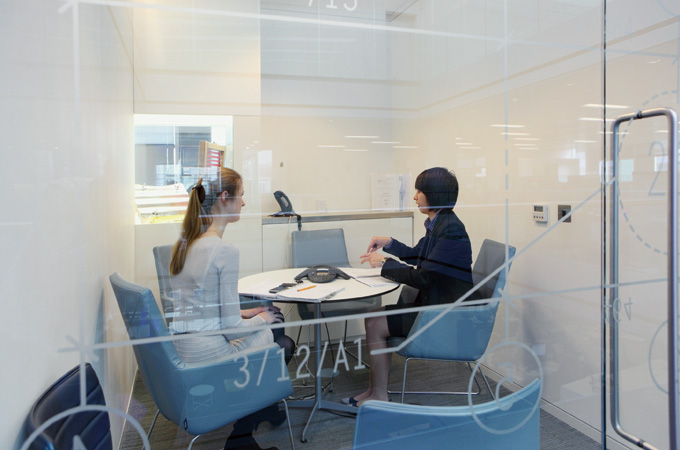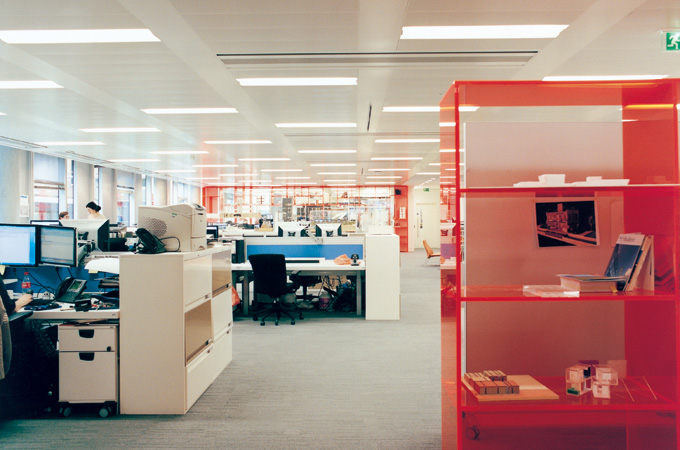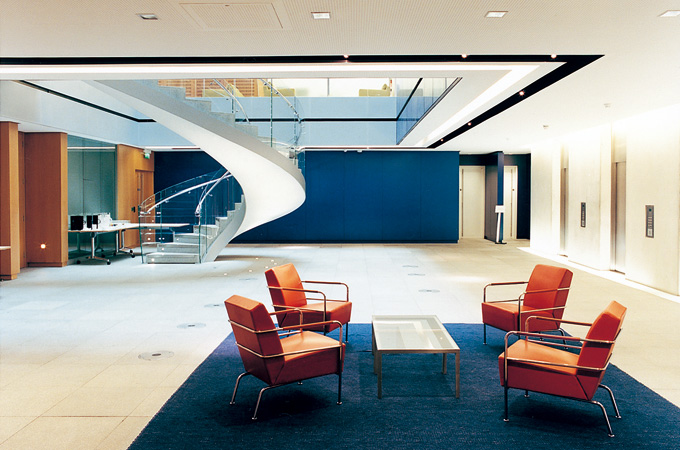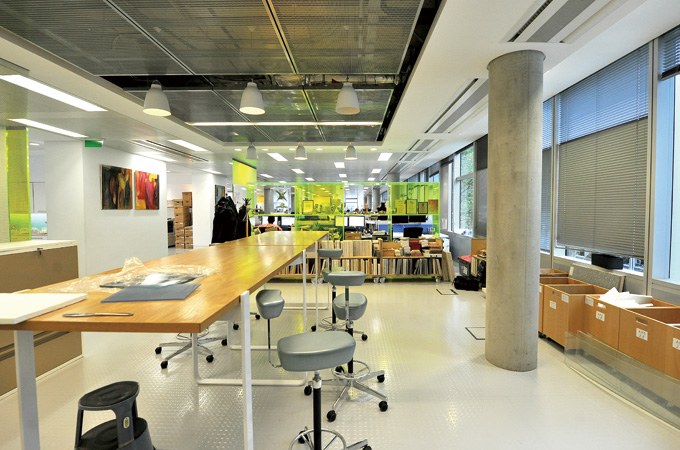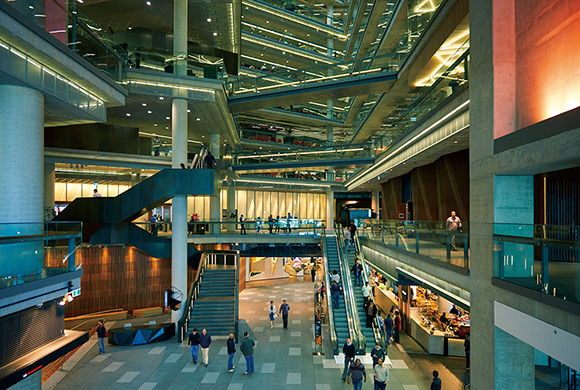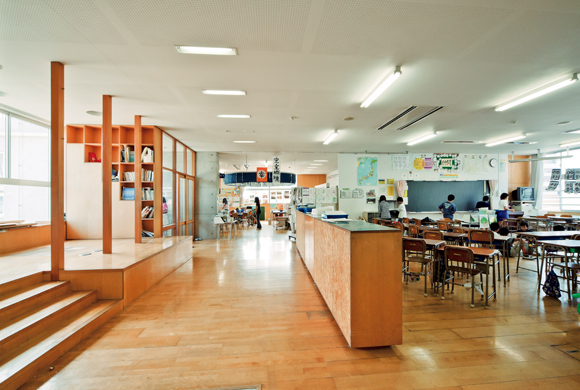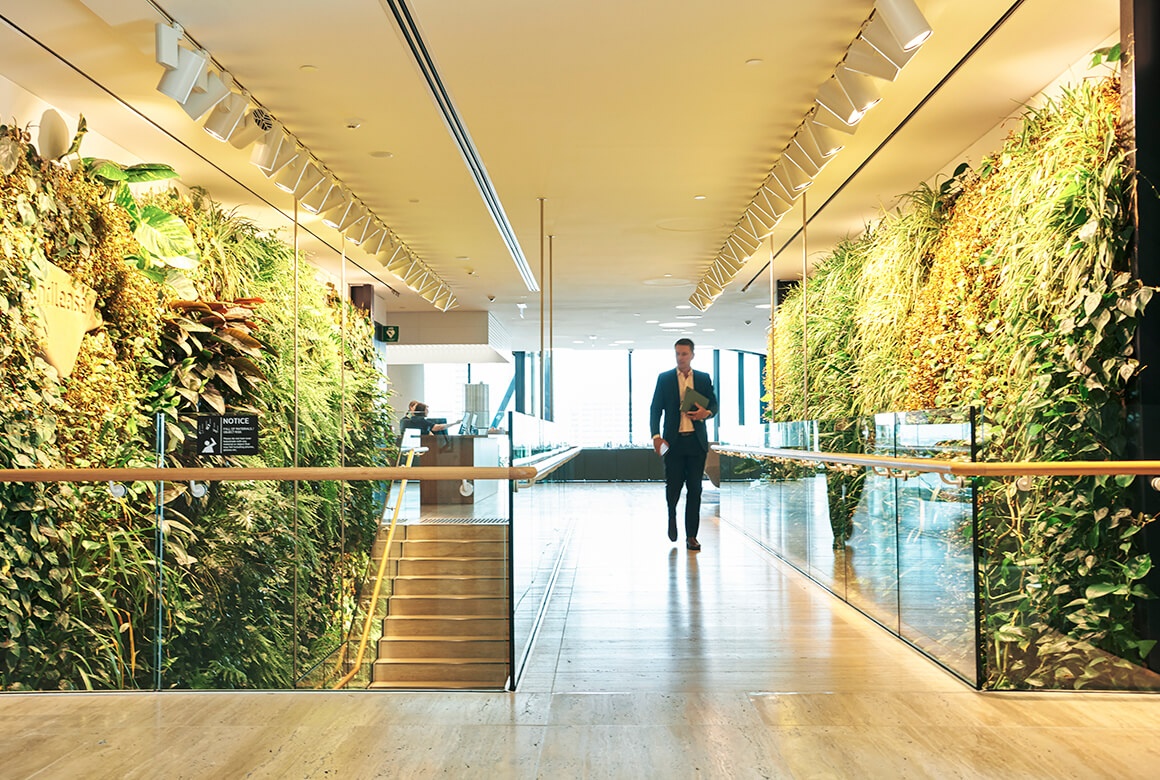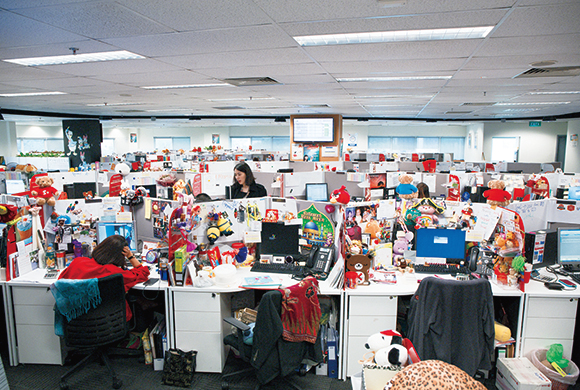Workplace
Sep. 1, 2015
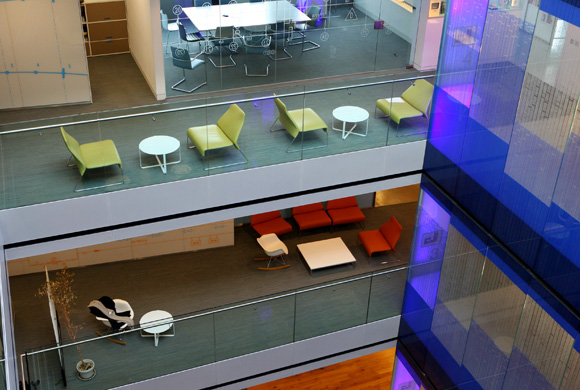
Continuing an original value the DNA of
Creative collaboration and partner matching
An engineering firm dedicated to cutting-edge architecture
[Arup] Fitzroy, London, UK
Arup’s work involves the requests it receives from architects, and means providing the engineering designs that will make the initial concept or basic design possible.
Company founder Ove Arup was able to see early on that there was a need for the new field of complex structural design services for large-scale architectural projects, and created a corporate structure based on the idea of creating a team of structural design professionals.
Some 1,800 employees now work in its London office, based around project leaders and engineers but also including structural engineers, mechanical engineers, electrical engineers, civil engineers, management consultants, planners, architects and other specialists working in a collaborative relationship. Large, complex construction or municipal projects have increased, and the Arup is playing an important role in architectural design by its specialization and innovation.
If any employee has interesting ideas, there is always a forum, or platform, for them to be heard. they can submit it to the internal investment council, which can provide the necessary funding and backup to bring the project to reality. The company is very meritocratic and that employees from the most junior upwards can have their voices heard. It is instead based on maximizing collective intelligence and a cooperative style of working that provides innovation to the construction industry.
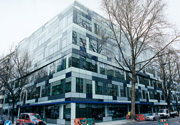 Total floor area of the building is roughly 16,400m². Some 1,800 employees work here. Coincidentally, HOK London is just a short distance away.
Total floor area of the building is roughly 16,400m². Some 1,800 employees work here. Coincidentally, HOK London is just a short distance away.
Founded 1946
2011 Sales: £960 million
Employees: Approximately 10,000
Locations: 90 offices in 37 countries
http://www.arup.com
If someone puts out an idea, of course it is the individual’s at first, but through the process of joint work, inevitably it becomes everyone’s project—meaning an Arup project. Small concepts or ideas for improvement are part of this, of course, but the ideas that are tied to new business are also seen as equal. The person originally proposing the idea talks about it with colleagues; the number of approvals increase; and if the Investment council that is part of the trust accepts it, the project can moved into commercialization.
Within the company is a networking infrastructure that provides an organic blend of the real and the virtual, one in which the specialists can cooperate in a natural structure. The offices are in a five-storey building, with a basement and an open area in the center so that people on different floors can look out and see their colleagues. There are shared spaces on each floor which need no reservations, and where members who meet can quickly pull out models and immediately join in discussions. To make it easy to directly meet and begin talking, the coffee and tea in the company cafe is all free. When an employee enters the company, their profile page is created and uploaded to the Arup People SNS, so other employees can quickly look up information on their partners. By entering a keyword, a list of applicable people from the Arup worldwide network will be displayed. Anyone someone wants to contact can be reached directly by instant messaging or video conferencing.
In today’s office, there are three departments designed for collaborative work. A survey of all employees asked what kind of workspace they wanted, and a summary was made giving the desired collaborative style. Many experimental techniques were also incorporated. These included things such as a fireproof curtain that can be used to protect precious materials from the water that would be sprayed from sprinklers in case of a fire; and a button indicating the floor that you want to go to, pressed before getting on an elevator so the most efficient elevator would come.
The idea behind cooperative work is to take all the existing resources within the company and widely and jointly make use of them. The materials of the company library date back to the 1960s, with company documents, books, academic magazines and others all safely stored so that employees can make use of them at any time. The reason for the global spread of the Arup name was the original design for the Sydney Opera House—and employees can still see the incredibly important documents from this project. In the company’s materials library, plastic, granite and other materials samples are preserved. This area can be accessed not only by employees but by clients as well, allowing people not only to see the materials directly but also to discuss as well.
In the company’s Intranet-based image library, images and plans from Arup projects have been uploaded in digital format. Depending on the permission granted by the client, anyone in the company can access these images. If rights exist for their reuse, the images can also be freely processed as well. Knowledge sharing also extends outside the company as well. Through video conferencing, PowerPoint materials can be presented over the net, while Arup technologies are on display in the multi-use space on the first floor. All these resources are freely shared, ready to help the next collaboration.
From WORKSIGHT 02(2012.6)
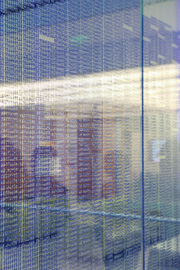 On one side of the atrium are glass panels with a DNA chain motif, created by glass artist Alex Beleschenko.
On one side of the atrium are glass panels with a DNA chain motif, created by glass artist Alex Beleschenko.
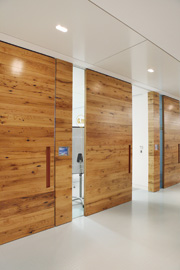 The meeting rooms can be quickly used on short notice when free.
The meeting rooms can be quickly used on short notice when free.
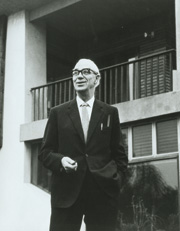 The company was founded in 1946 by philosopher and engineer Sir Ove Arup.
The company was founded in 1946 by philosopher and engineer Sir Ove Arup.
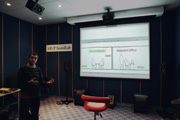 In the Sound Lab, projects at the end of the design stage can be matched with the project sounds of the spaces for play- back—one more form of engineering provided by Arup.
In the Sound Lab, projects at the end of the design stage can be matched with the project sounds of the spaces for play- back—one more form of engineering provided by Arup.


